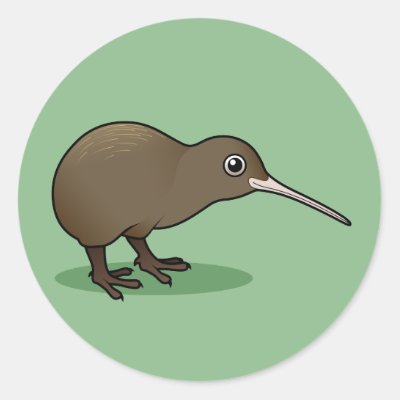We saw this bathing Killdeer at Merritt Island National Wildlife Refuge in Florida last week. The little guy kept bobbing his butt up and down, creating circles in the water. It was the cutest thing! :) For more Killdeer cuteness see our Birdorable Killdeer.
Blog Archive: November 2009
This week's highlighted t-shirt is our Birdorable Wild Turkey. Americans are celebrating Thanksgiving this Thursday. How will you spend your holiday?
Here are two new Birdorable coloring pages for some cute coloring fun: the Willow Ptarmigan (or Willow Grouse) and Chestnut-sided Warbler. Go to Coloring Pages to download these two new PDFs and check the Meet the Birds page to check the colors.
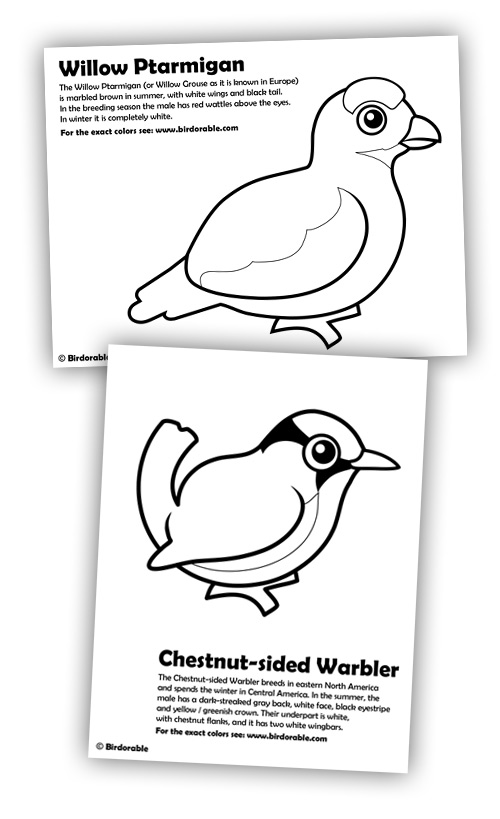
These downloads will be available until 31 December 2009. Check here for more coloring pages. Subscribe to the Birdorable Blog by RSS feed or by email to get notified when new downloads like this are added.
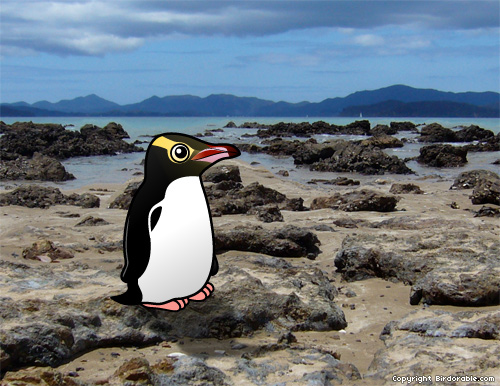
The Yellow-eyed Penguin is native to New Zealand, where it is also called Hoiho. There are only about 4,000 of these cute penguins left and it is considered one of the world's rarest penguins. Threats include habitat degradation and the introducion of predators, like wild cats and ferrets. In spring 2004, a disease killed off 60% of yellow-eyed Penguins on the Otago peninsula and in North Otago. The disease was described as diphtheritic stomatitis, but that is just a secondary infection while the primary pathegen remains unknown. A similar problem has affected another population on Stewart Island, where in six years about 70% of the penguin chicks died from a mystery illness. A reserve protecting more than 10% of the mainland population was established in 2007 in the Catlins by the Department of Conservation and the Yellow-eyed Penguin Trust. A 12km coastal reserve in the Catlins in the south of New Zealand's South Island was established in 2007 for the protection of the Yellow-eyed Penguin by the Department of Conservation.
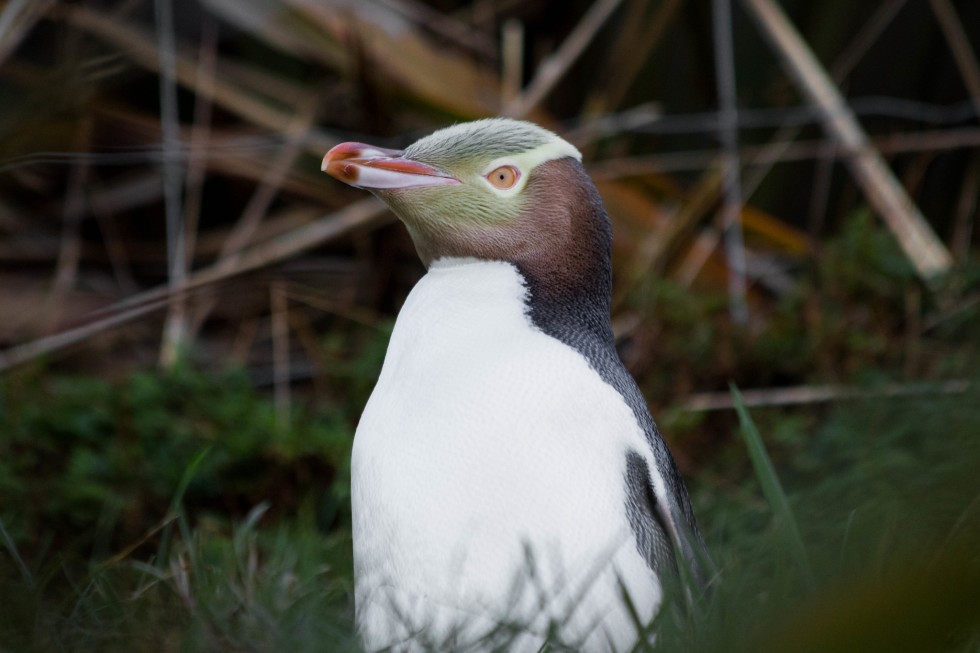
Yellow-eyed Penguin by Kimberley Collins (CC BY 2.0 DEED)
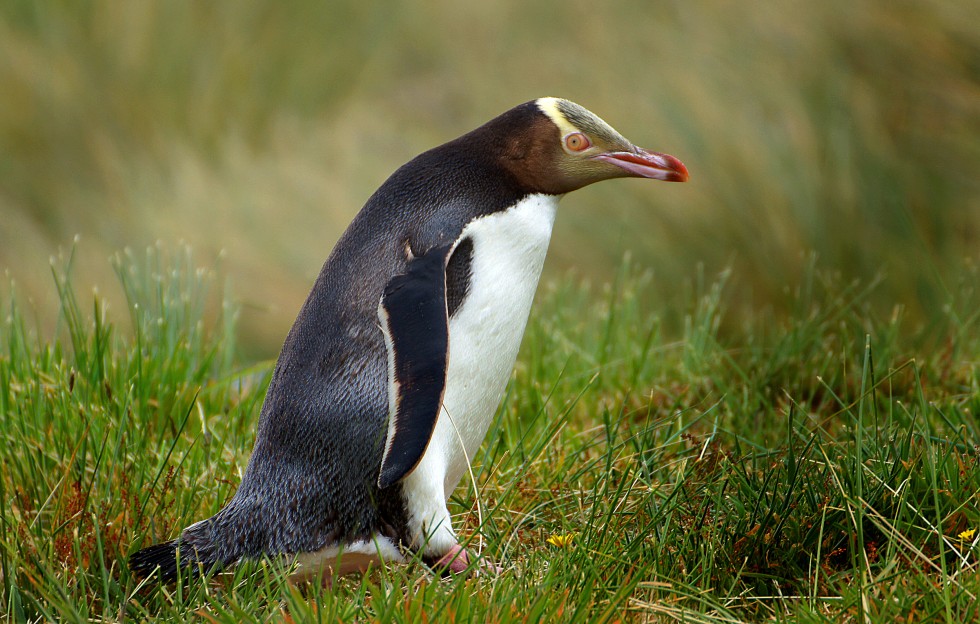
Yellow-eyed Penguin by Bernard Spragg (public domain)
In this week's featured Birdorable t-shirt design a group of Birdorable Canada Geese form a large Peace Symbol, also known as a Geese Symbol. Support peace on earth in style, with this cute Birdorable peace design. For more funny Birdorables see our funny designs section.

Two days ago we blogged about our new Birdorable Kiwi and today it's the turn of another flightless bird in the ratites family: the Ostrich is the largest living species of bird and it lays the largest egg of any living bird. Five different subspecies are recognized: Southern, North African (most common), Masai, Arabian (extinct) and Somali. Ostriches used to live in most of Africa and much of Asia Minor. Today they are native to the open savannas and Sahel of Africa. The Arabian subspecies used to be very common in the Arabian Peninsula, Syria and Iraq, but became extinct around 1966. They have excellent vision and hearing that helps them sense lions and other predators from far away. When being chased by a predator, Ostriches are known to reach speeds in excess of 45mph (70km/h) and they can maintain a steady speed of 30mph (50km/h), making them the world's fastest two-legged animal.
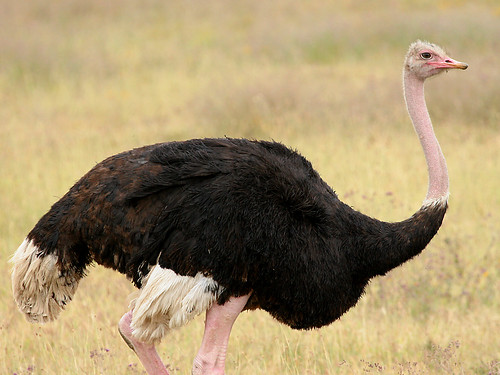
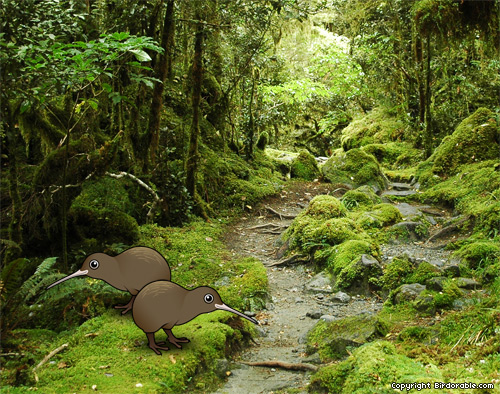
Today we've added the Brown Kiwi to Birdorable. Don't you just love this cutiepie? Here are some facts about this amazing bird:
- Kiwi are flightless birds. After New Zealand split off from Pangaea the Kiwi birds were isolated and no longer had any land predators. As a result they began to evolve smaller and smaller wings because they didn't need to fly.
- They are the world's only wingless birds
- The Kiwi is the only bird with nostrils at the end of its bill
- Kiwi have an excellent sense of smell but weak eyesight
- It can smell insects underground without seeing or feeling them
- Kiwi have no tail
- They are a member of the Ratite family, together with Cassowary, Emu and Ostrich
- The beak of the Kiwi is one-third the length of its body
- The genus name of the bird, Apteryx, is Greek for 'without wing'
- Kiwi are about the size of a domestic chicken (18 to 22 inches or 45 to 55 cm in length)
- They have very strong legs for ripping apart rotten logs
- Kiwi have been around for about 8 million years and haven't evolved much in this time
- There are five different species of Kiwi, all are endangered: Great Spotted Kiwi, Little Spotted Kiwi, Okarito Brown Kiwi, Tokoea and North Island Brown Kiwi
- The Kiwi is the national symbol of New Zealand
- Kiwi can outrun humans
- They are shy and nocturnal
- Male and female Kiwi mate for life; some are known to have been together for 30 years
- Kiwi lay the largest egg in relation to their body size; up to one quarter the weight of the female
- Baby Kiwi look just like a mini version of the adults
- The name either comes from its distinct cry: "kee-wee kee-wee" or from the Polynesian name for the Bristled-Thighed Curlew, the Kivi, which feeds in the same way as the Kiwi
- The New Zealand dollar is often called the 'kiwi dollar'
- Kiwifruit comes from China and was originally called Chinese gooseberries. In the 1960s, kiwifruit farmers in New Zealand decided to market their fruit overseas and called them "kiwifruit", after their national symbol

































